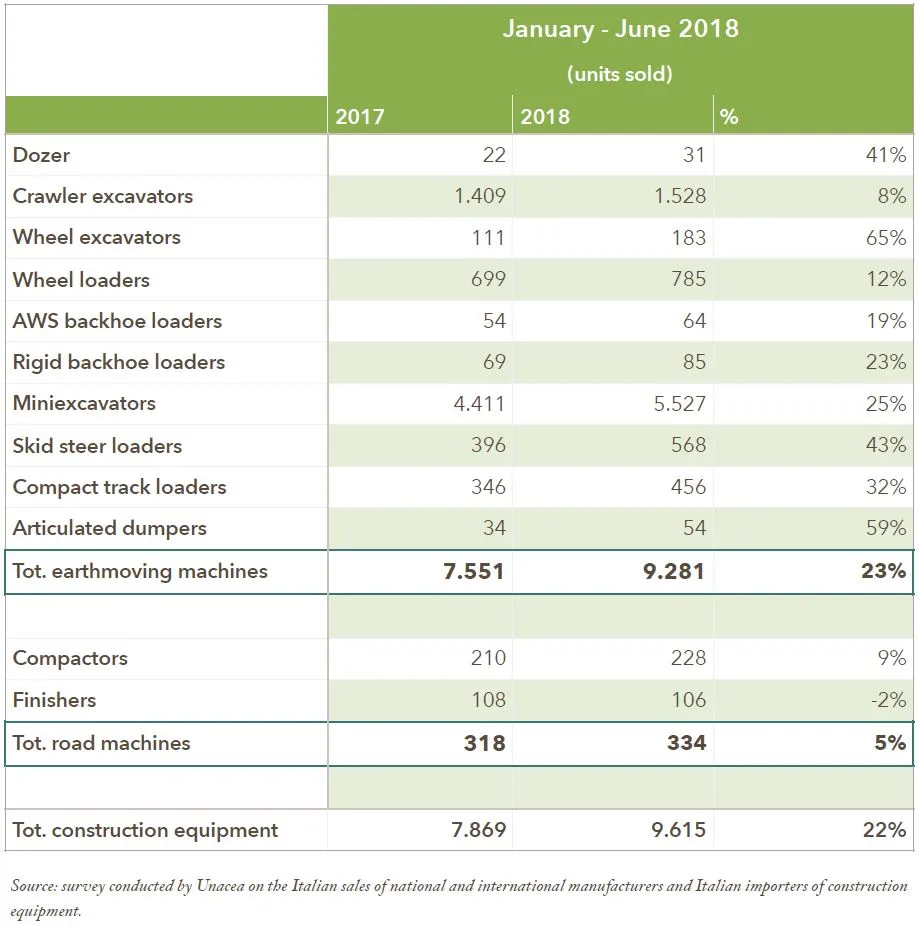The Italian manufacturers of construction machines are seeing positive developments in market demand for off highway equipment. In 2015, construction equipment sales in the Italian market increased by 34% to 9,138 units, compared to the previous year. The sales results show that 8,813 earthmoving machines were sold, a growth of 32%, while 325 road machines were sold, a growth of 180%.
February 3, 2016
Read time: 2 mins
The Italian manufacturers of construction machines are seeing positive developments in market demand for off highway equipment. In 2015, construction equipment sales in the Italian market increased by 34% to 9,138 units, compared to the previous year. The sales results show that 8,813 earthmoving machines were sold, a growth of 32%, while 325 road machines were sold, a growth of 180%. According to the data of the Italian institute for Statistics (Istat) processed by Prometeia for the Samoter Outlook, exports grew by 7%, although this was a lower rate of growth than seen in the previous year. Exports of drilling equipment increased by 22%, exports of tower cranes grew 21%, exports of road machines climbed 18% and exports of earthmoving machines grew by 8%. However, decreases were seen in export of crushing and screening equipment falling 4% and for concrete equipment, also falling by 4%. Imports of construction machines grew by 15%. Meanwhile the industry trade balance is positive at over €1.538 billion and has seen growth of 4.5%.
"After the darkest years of the crisis, Italy seems to have taken the right path of a gradual recovery,” said Paolo Venturi, president of Italian construction equipoment manufacturing association Unacea. He continued, “Two consecutive years in growth can only be a good result for the industry; however, to fully understand the trend, it must be remembered that this is a more than moderate growth in absolute terms, because it came after six years of heavy losses that have reduced the domestic market by 80%. This is why we continue to believe that the recovery has to be promoted and supported, especially in such a period of strong financial instability."
"After the darkest years of the crisis, Italy seems to have taken the right path of a gradual recovery,” said Paolo Venturi, president of Italian construction equipoment manufacturing association Unacea. He continued, “Two consecutive years in growth can only be a good result for the industry; however, to fully understand the trend, it must be remembered that this is a more than moderate growth in absolute terms, because it came after six years of heavy losses that have reduced the domestic market by 80%. This is why we continue to believe that the recovery has to be promoted and supported, especially in such a period of strong financial instability."






